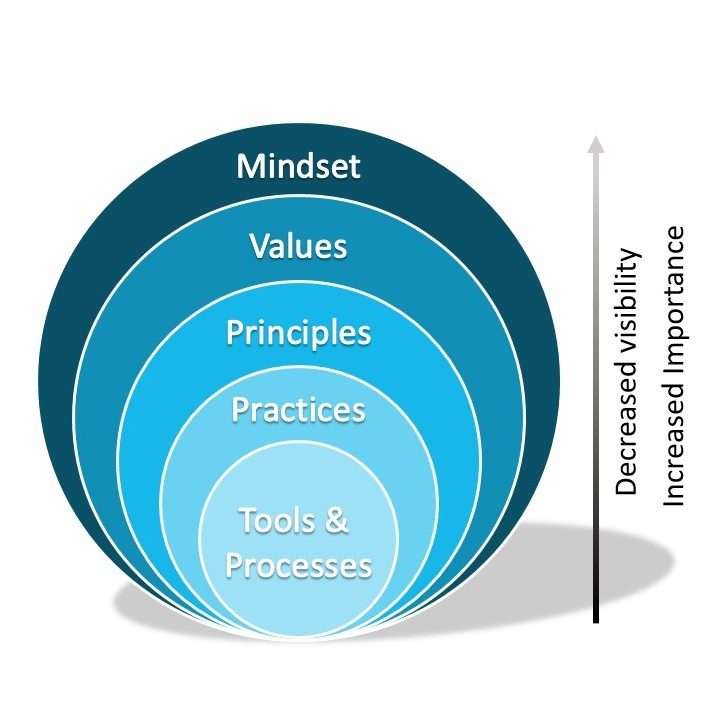
by Alec Bosomworth, senior consultant and Agile PM subject matter expert
Agile is seen as a new and exciting term; one which is being increasingly used as more and more organisations choose to “go agile”, with promises of better customer satisfaction and rapid delivery. All too often, however, these aspirations fall short. In my experience, this is often due to the misconception that agile is a method.
Yep, you read that correctly – agile is not a method.
What is agile then?
To understand what being agile is all about, it is important to appreciate where the approach first came from.
Agile is not a new concept, and was born from software development in the early 2000s. This approach was established on the basis that it is more time effective to test software/ pieces of code in an iterative manner than to create the finished product, only to later realise there are faults, or that the solution does not meet requirements.
It is implementing agile working outside of software development that is new. However, during the transition, the core definition of agile has been lost in translation.
Rather than a method, agile working is a mindset driven by a collection of values and principles which, if fully embraced, provide the foundations for improved delivery. The agile manifesto states four values;
We value…
Individuals and interactions over processes and tools
Working software over comprehensive documentation
Customer collaboration over contract negotiation
Responding to change over following a plan
These values are supported by twelve principles which, in a nutshell, encourage teams to collaborate and communicate frequently (including with the customer), to be empowered and trusted, to measure success based on the quality of their outputs, to embrace change, and to regularly reflect and learn.
Therefore, simply labelling a meeting as a ‘stand-up’ or referring to chunks of work as ‘sprints’ does not make an organisation agile. By the same logic, methodologies such as Scrum and SAFe, are not standalone solutions to becoming agile. Such methods should be considered a framework to assist in applying agile values and principles, and to inform each organisation’s individual approach to applying best practice.
Agile is therefore not so much about the practical way in which you work, but the values and principles organisations instil in their people.
How do you become truly agile?
If you are reading this and realising that you are not actually working in an agile way then don’t worry – you are certainly not alone! Even if you’ve misunderstood what agile is all about, the good news is that it is still completely possible to reap the benefits of agile working. Half of the solution is acknowledging the problem in the first place.
To work out where to start, the ‘agile onion’ below is a helpful figure to bear in mind. As discussed above, the agile mindset is the biggest success factor in becoming truly agile and, as depicted in the onion, is the layer of working that unites everything else.

Despite this, mindset is often the least visible aspect of agile working, with central layers such as tooling and practices hogging the spotlight. While the tools and processes in place play a huge role in delivery, without a conscious focus on the outer layers of mindset, values and principles; even the most advanced processes won’t be enough to succeed.
Becoming truly agile is therefore about changing focus and looking at ways of working from the perspective of the agile mindset. This involves asking yourself some challenging questions and being completely honest with the answers. Are we championing collaboration and communication? Do we welcome necessary change? Are teams empowered and trusted?
These questions are often a difficult barrier to overcome, but once an organisation becomes comfortable in providing completely honest answers, the opportunities for growth are abundant and the direction for improvement becomes clear.
As with any change, especially cultural changes, the process of becoming truly agile will inevitably be a marathon rather than a sprint. The benefits of implementing agile values and principles is definitely worth the persistence though, with agile working considered a strategic priority to become future ready for a staggering 92% of respondents in the KPMG 2019 Global Agile Survey.
Whatever it is that you wish to gain by ‘going agile’, you can be sure that adopting agile values and principles (and therefore achieving the mindset that comes with these) is the single most effective thing you can do to achieve the elusive benefits of agile working.
Want to see how we can help you ‘go agile’? Explore our agile services and see our consultants in action in our case studies.
